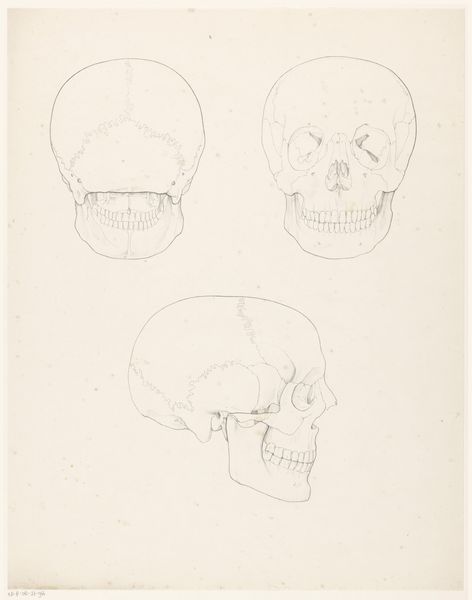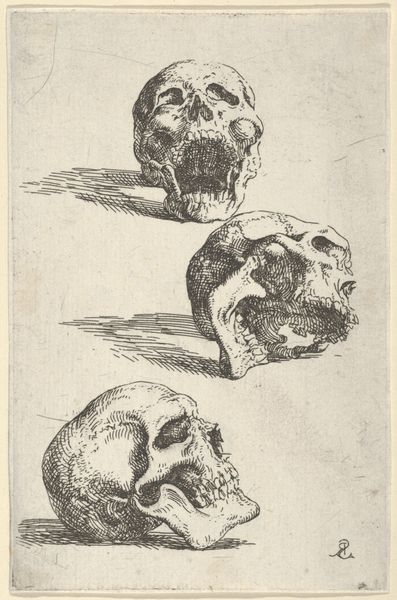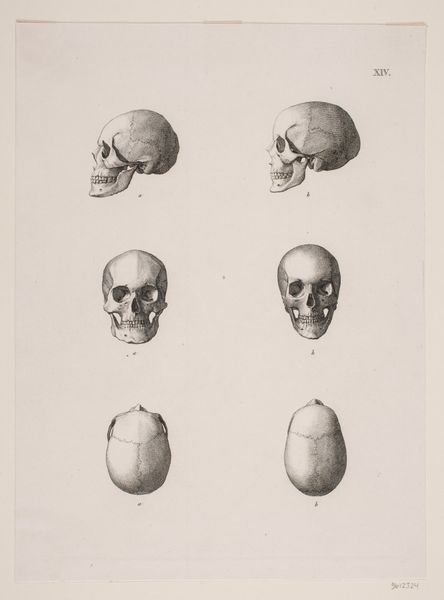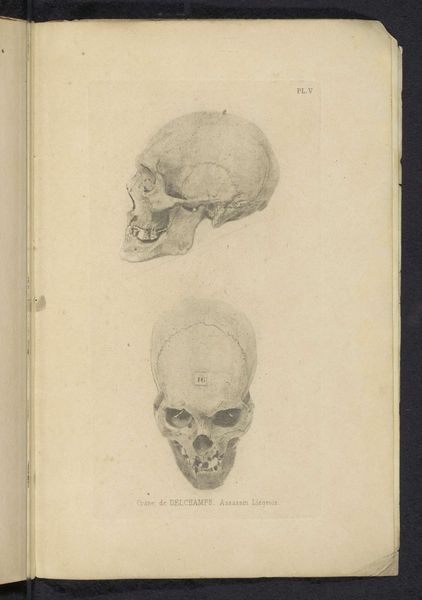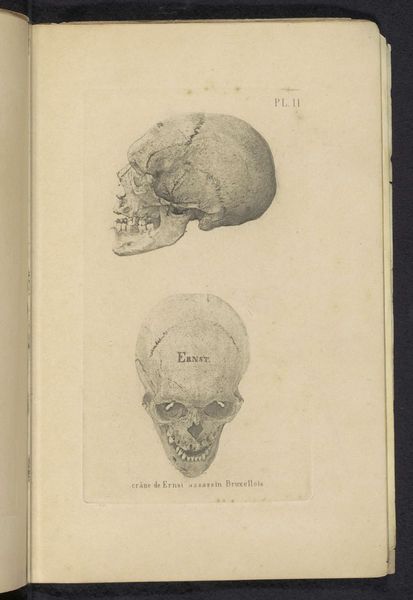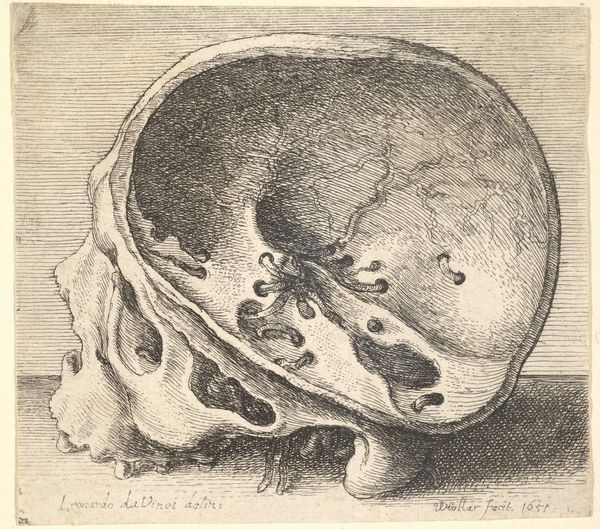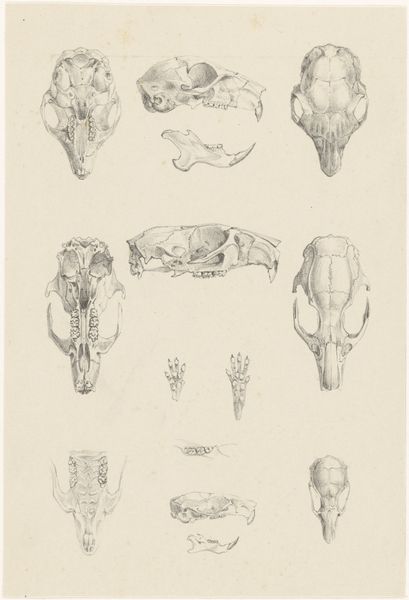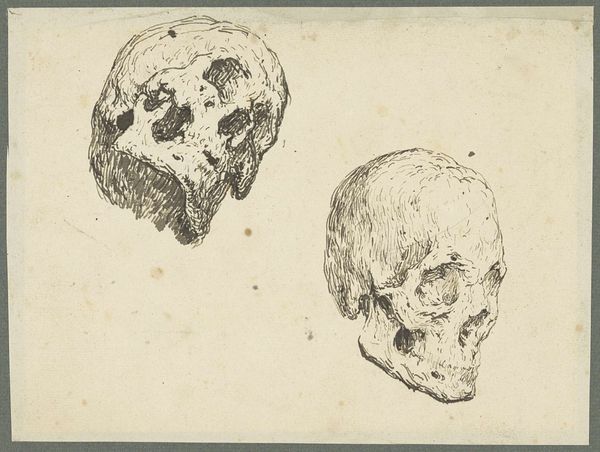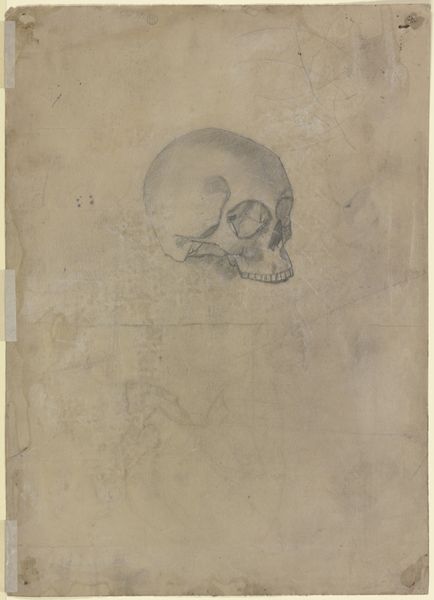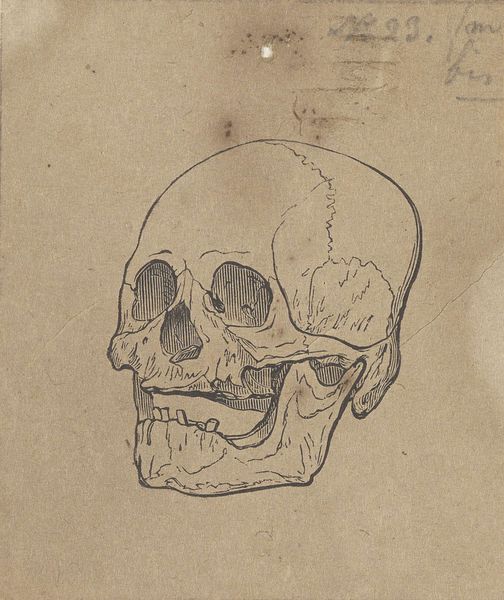
print, dry-media, pencil, woodcut, graphite
# print
#
pencil sketch
#
dry-media
#
coloured pencil
#
pencil
#
woodcut
#
15_18th-century
#
graphite
#
history-painting
#
academic-art
#
watercolor
Dimensions: 400 mm (height) x 245 mm (width) (bladmaal)
Andreas Flinch created this print titled "To kranier" – or "Two Skulls" – in Denmark sometime in the mid-19th century. It presents two separate lateral views of human skulls, rendered with a stark, scientific precision. The image likely reflects the rising scientific and pseudoscientific interest in phrenology and craniometry during this period. Craniometry attempted to correlate skull size and shape with character and intelligence, and it was often used to reinforce racial and social hierarchies. The skulls are presented as objects of study. As art, it stands to critique the institutionalization of scientific racism. Did Flinch endorse these views? Or was he challenging the problematic assumptions of the time? To answer this, we need to consult the scientific literature, political debates, and popular culture of 19th-century Denmark. The meaning of this artwork is deeply embedded in its historical context, reminding us that art is rarely neutral.
Comments
No comments
Be the first to comment and join the conversation on the ultimate creative platform.

